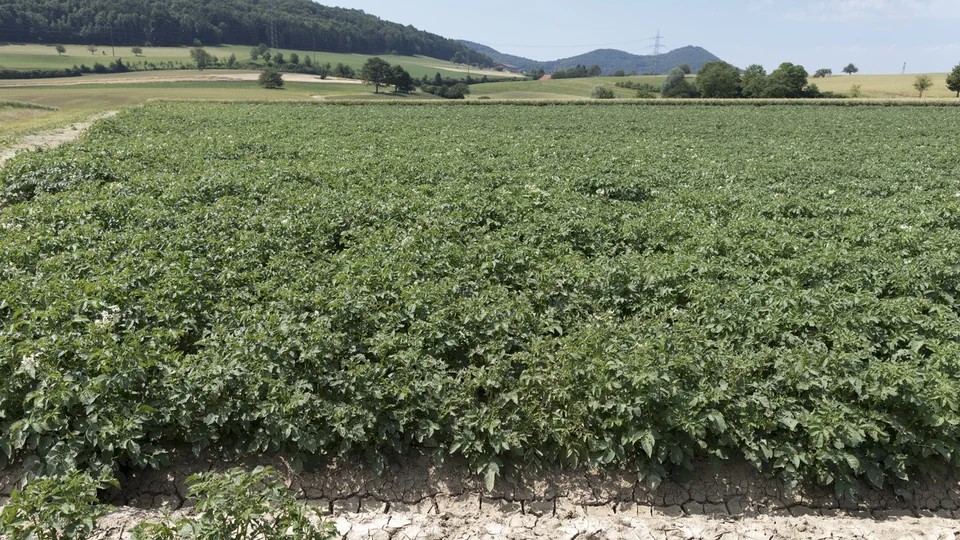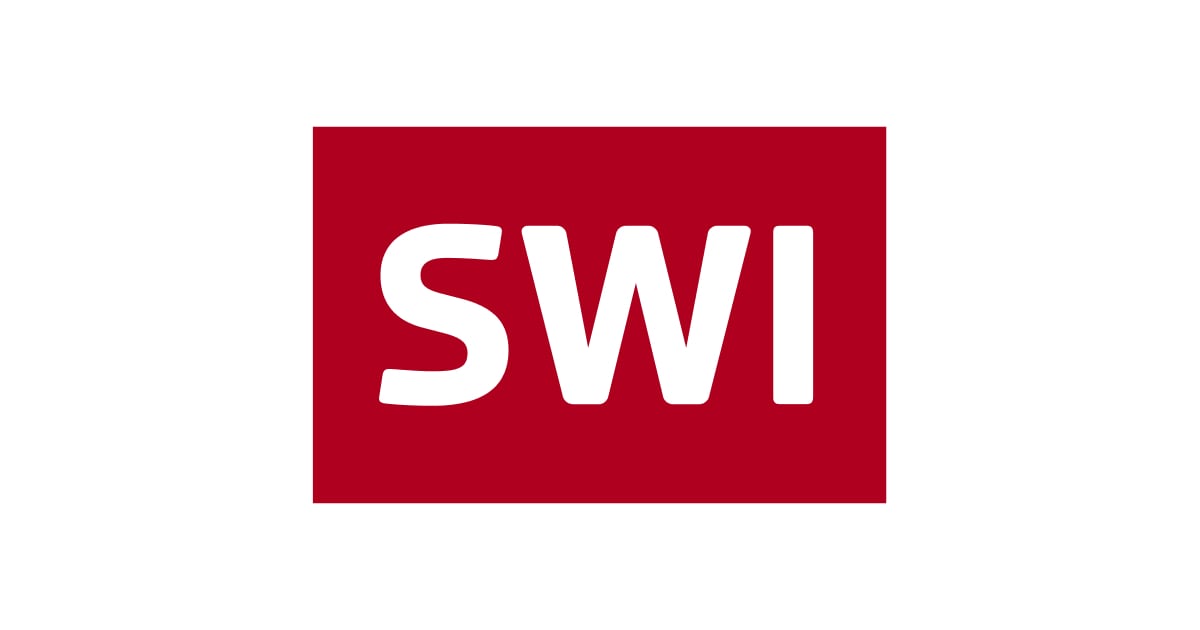
Potato seedlings are becoming a scarce commodity in Switzerland

Fewer farmers are producing seedling potatoes. Production is not easy. Swiss public television, SRF, investigates where the problems are and what solutions are available.
Simon Pfister stands on a large red harvesting machine, used to get his potatoes out of the ground. The machine is currently at a standstill. Every August, he drives it across his fields in the Seeland region of canton Bern.

The potatoes are freed from soil and stones during harvesting and end up in a hold at the front of the vehicle. In the last three years, the hold has not been as full as it used to be.
Noticeable effect of climatic change
The weather over the last three years has been bad for potato production. “Last year, there was a lack of rain at the right time,” says Simon Pfister. In previous years, it was either too wet or too hot and dry.
As a result, last year Swiss agriculture only supplied 17,000 tonnes of potatoes, a third less than was needed to fulfil domestic potato production. According to Swisssem, the industry association for seed producers, 27,000 tonnes are needed. this quantity was last achieved in 2018.
The low harvests are not the only reason for this shortage. Potatoes used as seedlings have to meet high standards. The limits for permissible virus and bacterial infestation are low.
High standards for potato seedlings
The weather also plays a role for issues pertaining to bacteria: if the soil is too wet, bacteria can multiply easily. If the weather is mild, there are many aphids, small sap-sucking insects, that transmit viruses.

Simon Pfister can recognise diseased potato plants in the field by their discolouration. He pulls them out by hand and removes them from the field. If there are only a few, it is quick work. However, at a certain point there are simply too many.
To certify these potato seedlings to be used as seed is then jeopardised. Together with a field inspector, Pfister must decide how to proceed. Worst-case scenario, Pfister will not be able sell his harvest.
Many farmers give up
This is exactly what happened last year with his waxy table potato variety “Ballerina”. They were no longer usable as seedlings. The farmer was able to leave them in the ground a bit longer to sell them as table potatoes, albeit at a lower price.
This also meant that he could not store his own potatoes to plant again the following year. Instead, he had to buy new seeds, another cost factor.
Declining acreage for production
Switzerland needs 1,540 hectares of arable land in order to have sufficient domestic potato seedlings.
Poor harvests, entire potato fields that fail the inspection: This is why farmers are switching to other, less risky crops.
Conversely, more seed potatoes have to be imported. This is likely to be around 10,000 tonnes this year, a third of the seedlings required in Switzerland
New potato varieties necessary
Pfister carries on regardless. He is worried, but the potato crop suits his farm well. In the longer term, new potato varieties are needed that meet the requirements of seedling potato production. Research is currently underway to find new varieties.
Translated from German by DeepL/amva

In compliance with the JTI standards
More: SWI swissinfo.ch certified by the Journalism Trust Initiative






























You can find an overview of ongoing debates with our journalists here . Please join us!
If you want to start a conversation about a topic raised in this article or want to report factual errors, email us at english@swissinfo.ch.